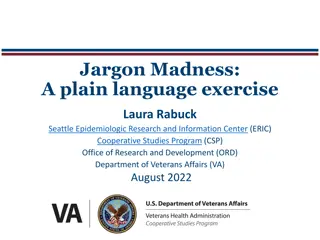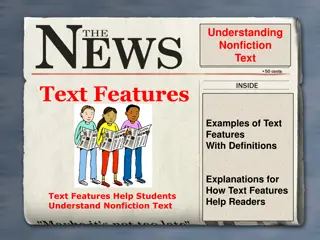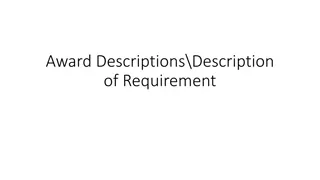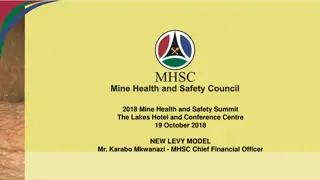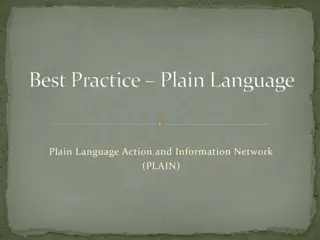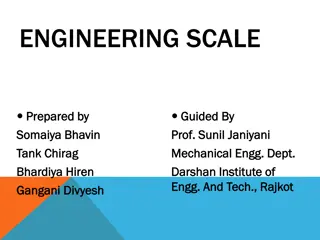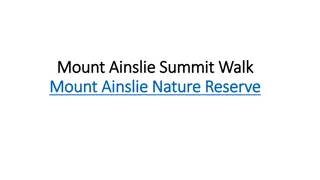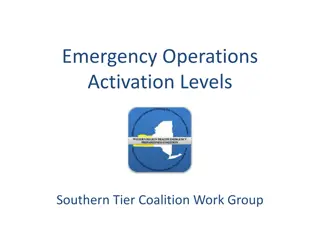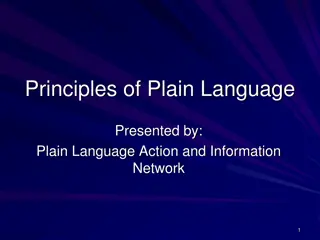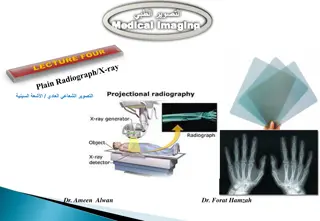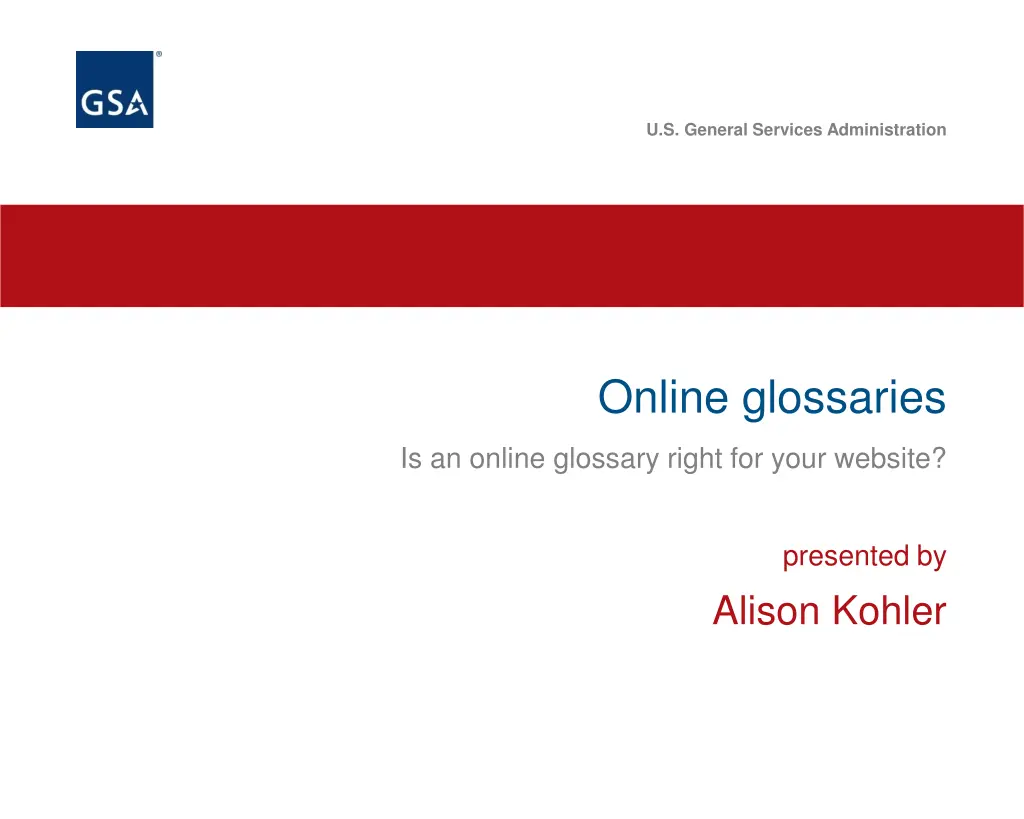
Understanding Online Glossaries: GSA's Pilot Initiatives and Options
Discover how the U.S. General Services Administration is utilizing online glossaries to cater to varying levels of audience understanding. Explore the pros and cons of static pages versus sitewide references, and learn about GSA's pilot programs and data-driven approach to user needs.
Download Presentation

Please find below an Image/Link to download the presentation.
The content on the website is provided AS IS for your information and personal use only. It may not be sold, licensed, or shared on other websites without obtaining consent from the author. If you encounter any issues during the download, it is possible that the publisher has removed the file from their server.
You are allowed to download the files provided on this website for personal or commercial use, subject to the condition that they are used lawfully. All files are the property of their respective owners.
The content on the website is provided AS IS for your information and personal use only. It may not be sold, licensed, or shared on other websites without obtaining consent from the author.
E N D
Presentation Transcript
U.S. General Services Administration Online glossaries Online glossaries Is an online glossary right for your website? presented by Alison Kohler
Background Background Problem statement You know how our audience is made up of different levels of understanding when it comes to jargon, technical or slang language? Potential solution Use an online glossary to serve these differing levels. 2
Options Options Two main options: 1. A static page with terms like U.S. Citizenship and Immigration Services. 2. Terms defined in references sitewide like Paperwork Reduction Act. Third option is a glossary widget on every page like FOIA.gov. 3
What GSA is doing What GSA is doing We are doing small pilots of both options on GSA.gov: Static page with 60 terms: gsa.gov/reference/glossary (pilot began in September 2021). Sitewide references for 20 terms on top-visited pages (pilot ended in April 2021). Examples: gsa.gov/small-business gsa.gov/buying-selling/purchasing-programs/gsa-schedule 4
Pros of static page option Pros of static page option If your site is (pretty much) the only one talking about the term, the page should come up when people search for the meaning of a word they don t know. Example: Deferred Vested Participant in a Google search has the Pension Benefit Guaranty Corporation s online glossary entry as its second result. One dedicated place to point other hyperlinks or references from any digital content. Example: You will sign an occupancy agreement with us. Less resource intensive to begin and keep up. 5
Pros of sitewide option Pros of sitewide option More user friendly to have a definition on the page users are reading, so they don t need to navigate away. Data indicate good engagement rate. In the first 30-day period with 20 terms: About 15,000 users clicked on the icon. 3 terms had an engagement rate over 10%. 4 terms had an engagement rate between 5 10%. 8 terms had an engagement rate between 1-5%. 3 terms had an engagement rate under 1%. 6
What do you need What do you need? Data. We want to deliver what the user needs and invest an appropriate amount of our resources for the return. We use Google Analytics most-viewed pages and then find terms on those pages that people need to have defined. We use a report of top query terms from our Search page to consider which terms users need information about. We use SiteImprove to look up the terms and see how many occurrences there are sitewide. 7
What do you need continued What do you need? A strategy Use a spreadsheet with: Terms (to alphabetize). Plain definitions (don t ask a SME). URL source (for back-end). Occurrence count. Also include: A legal disclaimer. A way to give feedback on missing terms or problems with the definitions. We use accordions to avoid cognitive overload. Limit your list (ours is 200 terms) and prune it once or twice a year. 8
How to decide on terms How to decide on terms Be user-centered Use search query data and SiteImprove occurrences to develop what terms to include. Avoid asking subject matter experts what terms they think belong. 9
Discussion Discussion Questions or follow up? Alison Kohler 816-223-6198 alison.kohler@gsa.gov 10
END 11

